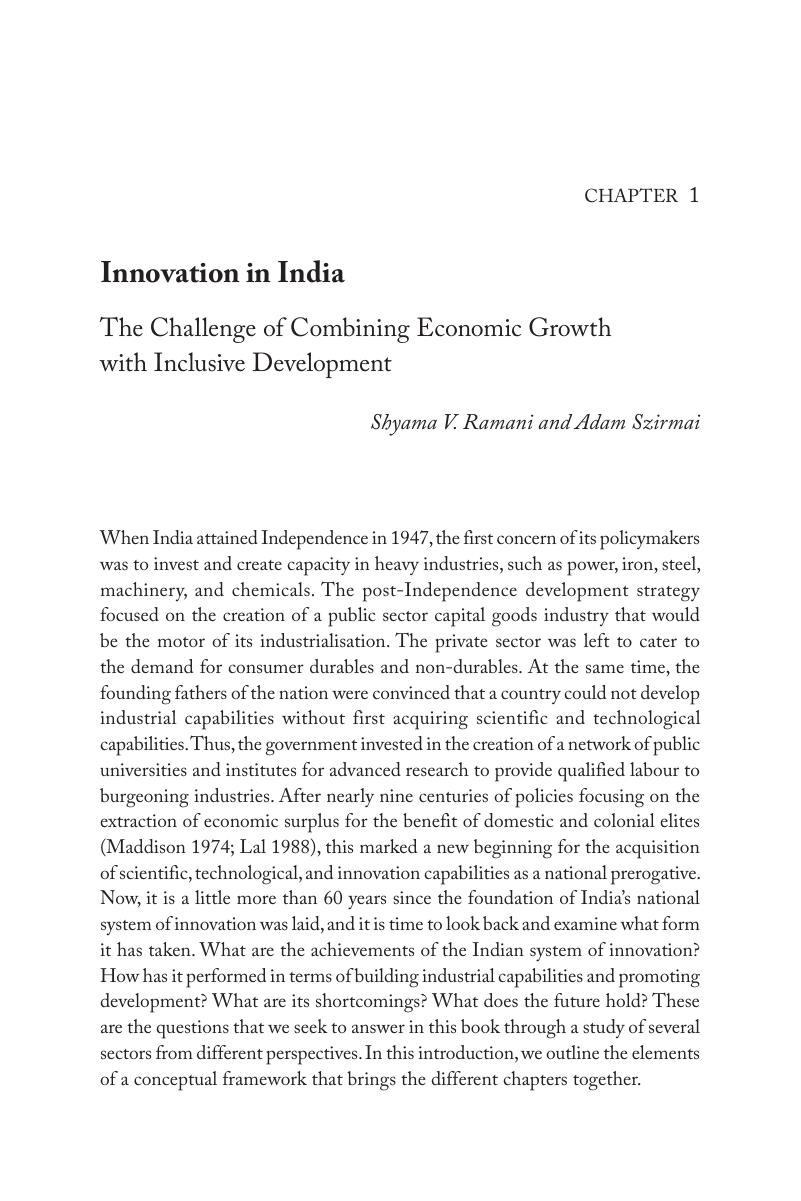Chapter 1 - Innovation in India
The Challenge of Combining Economic Growth with Inclusive Development
Published online by Cambridge University Press: 05 July 2014
Summary

- Type
- Chapter
- Information
- Innovation in IndiaCombining Economic Growth with Inclusive Development, pp. 1 - 36Publisher: Cambridge University PressPrint publication year: 2014
References
- 5
- Cited by



